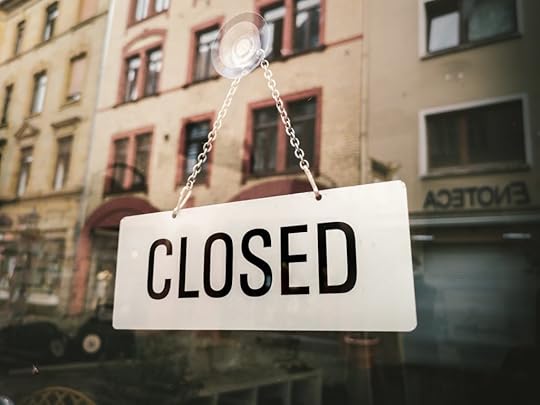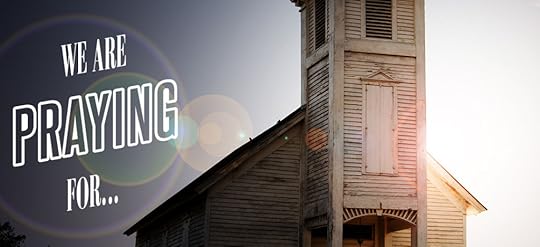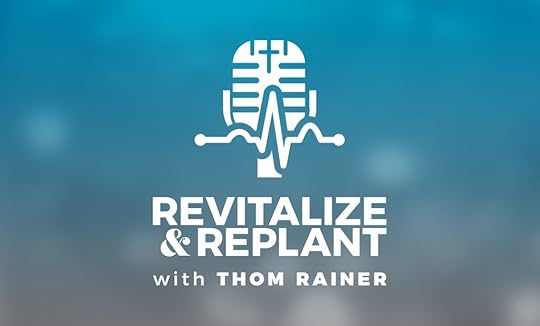Thom S. Rainer's Blog, page 88
April 29, 2020
10 Ways to “Jump Start” Your Personal Evangelism

By Chuck Lawless
Even as a professor of evangelism, I have to continually push myself to do evangelism. For what it’s worth (and frankly, as a matter of accountability), here are some steps I’m taking to move in the right direction:
Ask God daily to let me see people as He sees them. I tend to see people as the driver in the car who cut me off, the cashier at the gas station, and the neighbor whose name I don’t know. God sees them as sheep without a shepherd and souls for whom Jesus died.
Ask other believers to pray at least once a week that I will speak the gospel boldly and clearly. This approach is nothing more than what Paul asked the Ephesians and the Colossians to do for him (Eph. 6:18-20; Col. 4:2-4). If Paul needed that kind of prayer support, I surely do.
Ask God to renew my fire for Him. The bottom line for me is this: I do evangelism when I’m most amazed by Jesus. That’s why I wrote Nobodies for Jesus, and now I’m being challenged like never before to apply personally my own teachings.
Pray by name for non-believers at least once a week. I often pray every day for some non-believer, but I have also set up one weekly focused time for praying that God would open the blinded minds of non-believers (2 Cor. 4:3-4).
Strive to speak a good word about God to somebody each day. God is so majestic and His blessings are so numerous that I have no reason not to speak of His goodness. Even if I daily speak those words to only a believer, I develop the practice of moving conversations toward God.
Force myself to get to know people I don’t know. I’m an introvert who would prefer to read a book, but that tendency obviously hinders evangelism. With God’s grace and in His power, I’m learning to push myself out of my shell.
Offer to pray for others. Simply letting people know I’m committed to praying for them can open doors for deeper conversations. Life hurts sometimes, and folks who bear burdens alone are often both surprised by and appreciative of the offer of prayer.
Commit to telling a non-believer what Jesus means to me at least once a week. If one of the above strategies doesn’t open this door, here’s the approach I take: “I’m a follower of Jesus, and I’ve made a personal commitment to tell others what He means to me each week. May I have five minutes to tell you my story, and you help me to know if anything is unclear?” I’ve been surprised by how many people are open to listen.
Use social media to tell the gospel. I need to do evangelism face-to-face, but the Internet also provides multiple avenues for telling others about Jesus. I do not want to miss any opportunities.
Just be obedient because I want to please God. Anything less than a lifestyle of telling others about Jesus – and initiating those conversations because it models our God who came to us while we were yet sinners – would be disobedience.
What other steps would you add to this list?
April 28, 2020
10 Ways to “Jump Start” Your Personal Evangelism
By Chuck Lawless
Even as a professor of evangelism, I have to continually push myself to do evangelism. For what it’s worth (and frankly, as a matter of accountability), here are some steps I’m taking to move in the right direction:
Ask God daily to let me see people as He sees them. I tend to see people as the driver in the car who cut me off, the cashier at the gas station, and the neighbor whose name I don’t know. God sees them as sheep without a shepherd and souls for whom Jesus died.
Ask other believers to pray at least once a week that I will speak the gospel boldly and clearly. This approach is nothing more than what Paul asked the Ephesians and the Colossians to do for him (Eph. 6:18-20; Col. 4:2-4). If Paul needed that kind of prayer support, I surely do.
Ask God to renew my fire for Him. The bottom line for me is this: I do evangelism when I’m most amazed by Jesus. That’s why I wrote Nobodies for Jesus, and now I’m being challenged like never before to apply personally my own teachings.
Pray by name for non-believers at least once a week. I often pray every day for some non-believer, but I have also set up one weekly focused time for praying that God would open the blinded minds of non-believers (2 Cor. 4:3-4).
Strive to speak a good word about God to somebody each day. God is so majestic and His blessings are so numerous that I have no reason not to speak of His goodness. Even if I daily speak those words to only a believer, I develop the practice of moving conversations toward God.
Force myself to get to know people I don’t know. I’m an introvert who would prefer to read a book, but that tendency obviously hinders evangelism. With God’s grace and in His power, I’m learning to push myself out of my shell.
Offer to pray for others. Simply letting people know I’m committed to praying for them can open doors for deeper conversations. Life hurts sometimes, and folks who bear burdens alone are often both surprised by and appreciative of the offer of prayer.
Commit to telling a non-believer what Jesus means to me at least once a week. If one of the above strategies doesn’t open this door, here’s the approach I take: “I’m a follower of Jesus, and I’ve made a personal commitment to tell others what He means to me each week. May I have five minutes to tell you my story, and you help me to know if anything is unclear?” I’ve been surprised by how many people are open to listen.
Use social media to tell the gospel. I need to do evangelism face-to-face, but the Internet also provides multiple avenues for telling others about Jesus. I do not want to miss any opportunities.
Just be obedient because I want to please God. Anything less than a lifestyle of telling others about Jesus – and initiating those conversations because it models our God who came to us while we were yet sinners – would be disobedience.
What other steps would you add to this list?
The post 10 Ways to “Jump Start” Your Personal Evangelism appeared first on Church Answers.
The Temporary Normal including a Post-Coronavirus Facility Reopening Checklist from Smart Church Solutions

Podcast Episode #636
SUBSCRIBE:
iTunes • RSS • Stitcher • TuneIn Radio • Google Play • iHeart Radio • Spotify
In this edition of Rainer on Leadership, Thom and Sam interview Tim Cool, founder and chief solutions officer of Smart Church Solutions. Tim shares his checklist for reopening your facilities in the post-coronavirus world.
What do you see remaining the same when churches return to in-person services?
What are some of the major changes you expect?
Why should a church even worry about getting ready to return to its facilities?
Tell us about the checklist you are providing?
What else do church leaders need to know?
Resources mentioned in today’s podcast:
Church Future Indicator
Post-Coronavirus Facility Reopening Checklist
Smart Church Solutions
9 Ways the Digital World Is Transforming Teaching and Preaching Webinar
Episode Sponsors
 The mission at Southeastern Baptist Theological Seminary is to glorify the Lord Jesus Christ by equipping students to serve the church and fulfill the Great Commission. The school offers more than 40 different degree programs, including the new Master of Arts in Church Revitalization in partnership with Church Answers and the Revitalization Network. This 37-hour degree is designed to help students move established churches from flatlining to flourishing.
The mission at Southeastern Baptist Theological Seminary is to glorify the Lord Jesus Christ by equipping students to serve the church and fulfill the Great Commission. The school offers more than 40 different degree programs, including the new Master of Arts in Church Revitalization in partnership with Church Answers and the Revitalization Network. This 37-hour degree is designed to help students move established churches from flatlining to flourishing.
Learn about this program and more by visiting sebts.edu. Where are you going? Southeastern will help you get there.
Feedback
If you have a question you would like answered on the show, fill out the form on the podcast page here at ThomRainer.com. If we use your question, you’ll receive a free copy of Scrappy Church.
April 27, 2020
Five Trends of Church Closures Since the Pandemic Began

By Thom S. Rainer
“You were too late.”
Those were the words I heard from a conference attendee where I was speaking. It took me a few minutes to understand his meaning, but I finally got it. He was referring to my book, Autopsy of a Deceased Church. But his church had already shut its doors. Any help from the book was too late for that congregation.
Church closures were not the topic of church leaders until recent years. Now, more leaders are facing the reality that no congregation is immune from decline and possible death.
I have been watching church closure trends as carefully as possible for the past several years. I use the phrase “as possible” because precise data is impossible to obtain. We simply don’t have detailed information on how many churches close in North America each year. The estimates range from 5,000 to 10,000.
But we are able to discern some trends taking place in light of COVID-19. With churches unable to have in-person services, and with possible financial challenges, many churches are more at-risk than before the pandemic. Here are five trends we are watching closely:
Church leaders are more hopeful today than they were at the onset of the pandemic and suspension of in-person services. In our earliest survey of church leaders at the onset of the pandemic, 15 percent of church leaders said their churches were at serious risk of closure. In a similar poll just a few weeks later, only 3 percent had such dire pessimism.
Some church closures will be delayed as pastors move from fulltime to bi-vocational. We have heard from a number of pastors who have made the tough decision to move to bi-vocational status as a consequence of tightening financial realities during the pandemic. This will, at least for a season, delay church closures. It will not by itself reverse the path of decline of these churches.
The possibilities or likelihood of church closures have been wake-up calls for many leaders during the pandemic. One leader wrote to us: “God has used COVID-19 to slap me in the face and let me know we can’t do business as usual in my church. I know my church won’t be the same when we return, and I am determined I won’t be the same go-with-the-flow leader I have been.”
More churches will move into a foster relationship to avoid closure. We are watching closely a phenomenon I have coined “fostering.” It refers to a church that cannot sustain health within its own congregational family. As a consequence it receives or seeks help from another church for a defined period. At the end of that period, the struggling church is hopefully healthier. If not, it may become a candidate for adoption.
More churches will avoid closure by becoming adopted. For years, we have used the term “church replanting” to refer to the acquisition of the assets of one church by another. Sam Rainer changed the terminology to “adoption” since one church family is welcomed and brought into another church family. The trend of adoption will accelerate as a consequence of the pandemic.
For sure, these five trends do not represent an exhaustive list, but they do demonstrate the impact of COVID-19 on many congregations. While the pandemic did not cause these church struggles, it certainly has accelerated the consequences of them.
April 26, 2020
Pray for Hickory Grove Baptist Church

Location: Independence, Kentucky
Pastor: Bill Clark
Weekly Worship: Sundays at 8:30, 10:00, & 11:30, Eastern
Fast Facts: Hickory Grove Baptist Church in Independence, Kentucky is the recipient of Revitalize Network’s 2020 Church of the Year Long Obedience Award.
Hickory Grove is 219 years old. The church’s members have endured bold changes over the last 4 years in order to be obedient to God’s calling to reach the lost in their community. Hickory Grove is surrounded by families with young kids, and most of them are unchurched. The church intentionally invested in good, safe, clean facilities for youth and children to better serve these families. They also created several brand new first impressions teams: parking greeters, door greeters, hospitality, and runners who help every person find their way on their campus.
The church reallocated missions giving to partner with local community leaders to serve their neighbors and shine the light of the gospel. They partner with their local mayor, city administrator, a local school principal, and the county school system’s team of family resource directors. As a result of their obedience, Hickory Grove is now up to 3 worship services and they baptized 72 people in 2019.
Please pray for Pastor Bill Clark as he continues to lead this church in obedience to God’s calling. Also pray for the members as they minister to and serve their community for the glory of God.
Website: http://www.HickoryGrove.net
The 2020 Church of the Year Long Obedience Award was made possible by Southeastern Baptist Theological Seminary. http://www.SEBTS.edu
“Pray for . . .” is the Sunday blog series at ThomRainer.com. We encourage you to pray for these churches noted every Sunday. Please feel free to comment that you are praying as well.
If you would like to have your church featured in the “Pray for…” series, fill out this information form.
April 24, 2020
Five Hard Things Churches Must Do Right Now

Podcast Episode #635
SUBSCRIBE:
iTunes • RSS • Stitcher • TuneIn Radio • Google Play • iHeart Radio • Spotify
This season of isolation and social distancing has forced churches around the country to make hard decisions without an idea of what the other side holds. Listen in as Thom and Sam discuss the questions and best practices pastors are talking about right now on Church Answers and the five hard things churches must do right now.
Hit the reset button, not the pause button.
Keep as many employed as possible.
Experiment creatively
Stop complaining… now and forever.
Comply with the government’s request not to gather
Resources mentioned in today’s podcast:
Church Future Indicator
Church Answers Membership 60-Day Free Trial
40% off – 16 Quick Adjustments resource
Episode Sponsors
 The mission at Southeastern Baptist Theological Seminary is to glorify the Lord Jesus Christ by equipping students to serve the church and fulfill the Great Commission. The school offers more than 40 different degree programs, including the new Master of Arts in Church Revitalization in partnership with Church Answers and the Revitalization Network. This 37-hour degree is designed to help students move established churches from flatlining to flourishing.
The mission at Southeastern Baptist Theological Seminary is to glorify the Lord Jesus Christ by equipping students to serve the church and fulfill the Great Commission. The school offers more than 40 different degree programs, including the new Master of Arts in Church Revitalization in partnership with Church Answers and the Revitalization Network. This 37-hour degree is designed to help students move established churches from flatlining to flourishing.
Learn about this program and more by visiting sebts.edu. Where are you going? Southeastern will help you get there.
Feedback
If you have a question you would like answered on the show, fill out the form on the podcast page here at ThomRainer.com. If we use your question, you’ll receive a free copy of Scrappy Church.
April 23, 2020
Understanding the Types of Religious People in the United States – Part 2

SUBSCRIBE TODAY:
iTunes • RSS • Stitcher • TuneIn Radio • Google Play • Spotify
Today, Thom and Kevin pick up with part two in a great discussion for churches as they reimagine themselves after the Coronavirus. Upon re-entry, churches will be able to redefine what is new. Many churches have been challenged to reach demographic groups which do not hold to a belief in Christ. New research from PEW Research Center provides the Church with helpful religious typology in order to learn how to reach your community more effectively for the Kingdom.
Part 2:
Most U.S. adults identify with a particular religious denomination or group. They describe themselves as Catholic, Baptist, Methodist, Jewish, Mormon or Muslim– to name just a few of the hundreds of identities or affiliations that people give in surveys. Others describe themselves as atheist, agnostic or say they have no particular religious affiliation. These are the conventional categories into which Americans sort themselves. But a new Pew Research Center analysis looks at beliefs and behaviors that cut across many denominations – important traits that unite people of different faiths, or that divide people who have the same religious affiliation – producing a new and revealing classification, or typology, of religion in America.
The new typology sorts Americans into seven groups based on the religious and spiritual beliefs they share, how actively they practice their faith, the value they place on their religion, and the other sources of meaning and fulfillment in their lives.
Resources mentioned in today’s podcast:
The Religious Typology – Pew Research Center
SEND Relief

Revitalize & Replant is sponsored by the North American Mission Board and ChurchReplanters.com. More than 10% of churches in North America are at risk of closing and the North American Mission Board is committed to reversing this trend by decreasing the death rate of existing churches while simultaneously increasing the birth rate of new churches. To learn more about what it means to become a replanting pastor or to explore resources for replanting and revitalization in your own church, visit ChurchReplanters.com.
Submit Your Question:
Do you have a question about church revitalization or replanting for us to use on the podcast? Visit the podcast page to submit your question. If we use it on the show, you’ll get a copy of Autopsy of a Deceased Church and Reclaiming Glory.
April 22, 2020
Your Church is Worth the Effort

By Sam Rainer
Your discouragement is understandable. A lot is happening in the world right now. Everyone is on edge. When will the pandemic pass? Perhaps your church is not doing well. Maybe you’re tired, or disheartened. Maybe you’re hurt.
Don’t give up. Your church is worth the effort.
Some churches reek of selfishness, but even the unpleasant bodies need someone to help clean out the noxiousness. If you don’t mind body odor, then you’re probably the one God is calling to scrub a few saints. Be strong.
Don’t give up. Your church is worth the effort.
Some churches fight. A lot. Hostile churches need someone to be the example. Show them how to fight for a church, not with a church. Be brave.
Don’t give up. Your church is worth the effort.
Some churches are the butt of everyone else’s jokes. They don’t have a clue, and people scoff. I don’t think Jesus has ever—or will ever—ridicule a church. Jesus has a great sense of humor. But the church is his bride. Every congregation deserves someone who will lovingly shepherd towards a greater purpose. Be resilient.
Don’t give up. Your church is worth the effort.
Some churches are immature. The body acts like a gangly middle schooler trying to impress the girls at skate night. The people go around in circles. Energies are poured into all the wrong things. If this is your church, then be the bigger spiritual person. Middle schoolers don’t mature without guidance. Churches don’t disciple properly without a mature shepherd. Be determined.
Don’t give up. Your church is worth the effort.
It’s hard, but worth it. Selflessness can be lonely. Your peers may wonder why you stick around. Your church may not get it. But you’re not alone. The Groom is with you—always. He’ll build your church to overcome the gates of hell. Don’t give up. Your church is worth the effort.
April 21, 2020
Why Your Church Must Move to Both Digital AND Automated Giving Immediately (Interview with Jess Rainer)

Podcast Episode #634
SUBSCRIBE:
iTunes • RSS • Stitcher • TuneIn Radio • Google Play • iHeart Radio • Spotify
In a time when most churches are holding virtual services, Thom and Sam speak with Jess Rainer regarding best practices and benefits in moving to both digital and automated giving immediately.
What are the definitions of automated giving and digital giving?
Talk about how these methods of giving have been a blessing for your church.
Help us to understand why these methods of giving are important not only for the pandemic. but for the future.
How would you recommend a church leader encourage a senior adult to automated giving? Why might this path be easier than the typical digital giving channels?
Resources mentioned in today’s podcast:
Church Future Indicator
Leading Virtually Sale
The Millennials – Thom S. Rainer and Jess Rainer
Episode Sponsors
 The mission at Southeastern Baptist Theological Seminary is to glorify the Lord Jesus Christ by equipping students to serve the church and fulfill the Great Commission. The school offers more than 40 different degree programs, including the new Master of Arts in Church Revitalization in partnership with Church Answers and the Revitalization Network. This 37-hour degree is designed to help students move established churches from flatlining to flourishing.
The mission at Southeastern Baptist Theological Seminary is to glorify the Lord Jesus Christ by equipping students to serve the church and fulfill the Great Commission. The school offers more than 40 different degree programs, including the new Master of Arts in Church Revitalization in partnership with Church Answers and the Revitalization Network. This 37-hour degree is designed to help students move established churches from flatlining to flourishing.
Learn about this program and more by visiting sebts.edu. Where are you going? Southeastern will help you get there.
Feedback
If you have a question you would like answered on the show, fill out the form on the podcast page here at ThomRainer.com. If we use your question, you’ll receive a free copy of Scrappy Church.
April 20, 2020
What If All Our Church Attendees Showed Up at the Same Time? Five Thoughts

By Thom S. Rainer
A frequent comment I get from pastors and other church leaders often goes like this statement: “If all our members who attend regularly or sporadically showed up at the same time, our worship center would be packed.”
I get it. One of the more frustrating aspects of a pastor’s ministry is dealing with nominally committed church members. As we wait to return to our in-person worship services, let’s start addressing this issue before the stay-at-home recommendations lift. Here are five thoughts:
We must address the reality of the 64% factor. Though our social media poll was not scientific, the large number of responses we received was indicative of the interest in the topic. We asked church leaders to provide us two numbers. The first was average weekly worship attendance before the pandemic. The second was the estimated attendance if everyone showed up at the same time. The results were astounding. The median increase in worship attendance would be 64% if everyone showed up at the same time. So, a 100-attendance church would have 164 present. A 500-attendance church would have 820 in attendance.
We must ask the question, “Where have all the church members gone?” In many of your churches, you can do this exercise by each family. In larger churches, you can do a representative sampling. Look at the families and individuals who attend with a frequency of twice a month or less. Assign a reason for their lack of commitment. Is it sports’ leagues? Is it travel? Is it sleeping in? Is it undetermined or other? While this exercise might not be the most encouraging thing you can do, it will help begin your strategy with a healthy dose of reality.
We must be prepared for the aftermath of social distancing. This issue will become particularly important if no vaccine is available for COVID-19 this year. Our worship services may have a much smaller capacity than before the pandemic. We may have to allow for more space between attendees. What are the implications for attendance at your church if this does become a reality?
We must be prepared for in-person attendance to return in waves after the stay-at-home recommendations are lifted. We anticipate that a number of church members, particularly older members, will not return immediately. So, it is very likely that some of your “every Sunday” members will not be in attendance for several weeks. They will be watching the news carefully to determine when it is safe for them to be in more public settings.
We must return to the post-COVID-19 world with a renewed attitude about the importance of the gathered church. I have heard this sentence countless times: “The church is not a building; it’s the people.” While that statement is biblically correct, it is often used incorrectly to minimize the importance of worship attendance. The church gathers so it can be the church scattered. Whether attendance takes place in a traditional worship center, a warehouse, a storefront, a home, or under a tree, it is still biblically important for the church to gather. We must stop apologizing for advocating the importance of committed and consistent church attendance.
What if all of our church members showed up at the same time? That is not only an important question to ask, it is an important strategy to begin.
It’s time. It’s time to stop accepting sporadic attendance as normal, and to expect our church members to be committed to gathering every single week.



